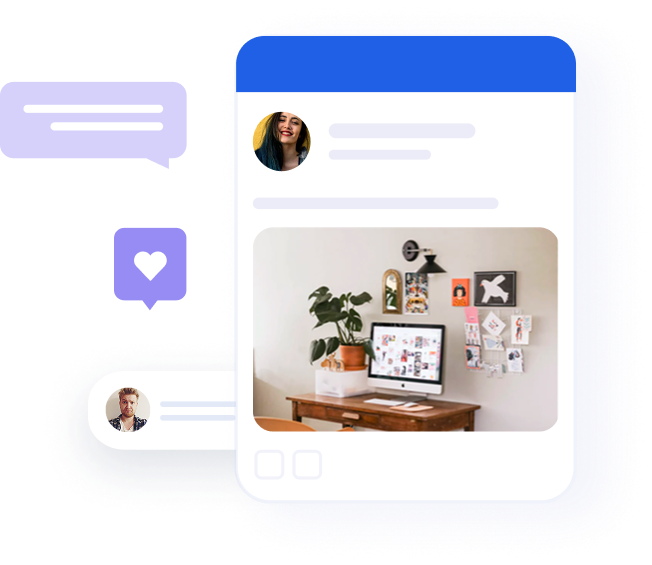
Balancing generative AI with authenticity, can it be done?
Table of contents
As a content writer, I get it – truly embracing Generative AI can be challenging. We were educated throughout our lives not to plagiarize and to ensure our work was authentically ours. And then overnight, here came AI.
We’re no longer riding the wave and dabbling with AI for amusement. AI is here to stay and it will only become more integrated into B2B marketing processes in the future. In fact, 65% of B2B content marketers will start using generative AI tools to develop content.
AI is one of the strongest tools at your disposal for scaling content creation, boosting productivity, saving time researching, and making yourself much more efficient at work. But when having discussions about AI-generated content, one of the biggest arguments against its adoption is that it lacks authenticity.
So the question is, can we balance AI with authenticity? Short answer – yes.
For the long answer, keep reading. We’ll dive into best practices to maintain authenticity and why the partnership between both AI and a human touch is the perfect pairing for scaling your results, whilst keeping a human connection alive.
Jump ahead:
- Why being authentic is crucial for B2B success
- Best practices to maintain authenticity with AI
- 7 ways AI can help with the content creation process
- AI and a marketer touch – the perfect combination
Why being authentic is crucial for B2B success
For B2B brands, authenticity is essential for establishing trust, forging genuine connections, and upholding a strong brand image. Unlike B2C, where trust can be more instantaneous, B2B relationships require consistent nurturing, especially on social media where 75% of B2B buyers research solutions. A strategy that emphasizes educational and valuable content can significantly enhance these connections by providing insights and solutions to your customers’ challenges. Authentic marketing is not just beneficial but crucial, setting your brand apart as a trusted industry leader.
Best practices to balance AI with authenticity
Using AI for marketing content creation offers numerous advantages, including efficiency, scalability, and the ability to analyze vast amounts of data for targeted content. However, using AI to empower your strategy should not come at the expense of authenticity.
Some of the pitfalls of relying on AI include a lack of human touch, low-quality content, and ethical considerations such as plagiarism and copyright. But, every challenge has a solution. Here are the best practices you should adopt to maintain authenticity with AI:
Human oversight
Several factors can cause AI-generated content to fall short of expectations, ranging from inaccuracies or outdated information to a mismatch in tone, style, and relevance for the intended outcome.
To ensure the content you share with your audience is relevant and accurate, integrating fact-checking and ensuring that the output meets quality standards are essential steps. Human involvement in these processes is key to upholding the integrity and authenticity of AI-generated content.
Enhance AI content with human creativity
After seeing so much repetitive AI content, we all know when we’re reading it. Hooks beginning with “in the ever-evolving landscape” sort of give the game away.
Relying on AI runs the risk of producing content that is too generic and similar to what other avid AI users are creating. This will reduce the originality of your content. To avoid publishing similar content as everyone else in the space, add your unique brand identity, and company tone and voice to your content.
Look at AI-generated content as the first draft, and yourself as the editor. By adding human creativity, you’ll also ensure your content reflects the way people speak in real life rather than the artificial, robotic tone we all recognize as AI. As a marketer, you have the creative power to scale up AI content to resonate with your audience.
To sum up this concept perfectly, listen to what our guest Solveig Rundquist had to say about the use of AI in our recent webinar:
Watch the full conversation: Using Data to Drive Authentic Human Narratives
Give AI all the context it needs
When requesting copy from ChatGPT, we know it’s easier to write a quick sentence asking for a social media post on a certain topic. But this will result in broad messaging that most likely misses the focal point you have in mind, becoming a lot less convenient in the long run.
To reduce the time you spend refining your content, you need to give AI all the context it needs to produce the content as close to what you’re looking for as possible. Remember: the better the input, the better the output.
So, what should you be including in your prompts? Here are a few ideas:
- Clear objectives: Specify the type of content needed, such as a blog or social media post, and the primary goal of the content, such as to inform, persuade, or entertain.
- Your target audience: Define your audience by demographics and interests to ensure the content is appropriately tailored.
- Desired tone and style: Indicate the desired tone, such as formal, casual, or professional, and any stylistic preferences.
- Key points: List the main points, messages, or information that must be included, ensuring the content meets your informational needs.
- Keywords: Provide relevant SEO keywords or phrases to be incorporated.
- Length and format: Specify the required length and format, such as if it should include bullet points, paragraphs, or be a listicle piece.
- Examples: Include examples of similar content or references that capture the essence of what you’re aiming for, if applicable.
- Desired CTA: If the content needs to prompt the reader to take action, specify what that action should be for example, subscribe, buy, or learn more.
Depending on what you’re aiming to produce, not all of these categories will be relevant but including even a few of them will significantly improve the output AI can give you.
For some inspiration on how marketing teams are using AI to drive meaningful content, tune into what our guest Yael Klass, VP of Marketing at Similarweb had to say on the Radically Transparent podcast about where the team incorporates AI into their content creation process:
By providing detailed and specific prompts, you significantly increase the chances of AI generating content that meets your expectations and requires minimal revisions, making the content creation process more efficient and effective.
Recommended for further reading
7 ways AI can help with the content creation process
AI can significantly enhance the content creation process in several ways. Here are a few ways you can use it to empower your marketing workflow:
- Idea generation: AI can provide content ideas and headlines based on current trends, keywords, and user engagement data.
- Content drafting: AI can help draft articles, blog posts, and scripts, speeding up the writing process. It can help you come up with the basic ‘bare bones’ version of your content, but it’s up to you, the author, to give it personality.
- Spell checking: AI tools can offer grammar corrections, style suggestions, and readability improvements – always remember to include a human in the proofreading process, think of AI as an extra set of eyes.
- SEO optimization: AI can analyze content for SEO performance, suggesting keywords, meta descriptions, and optimizations to improve search rankings.
- Visual content creation: AI can generate images, infographics, and videos, complementing textual content and enhancing storytelling.
- Content planning: AI can assist in planning content strategies, predicting the best times to publish, and identifying content gaps.
- Data analysis: AI can analyze content performance data, providing insights for future content creation and strategy adjustments.
AI and a marketers’ touch – the perfect combination
For B2B businesses, the importance of authentic marketing cannot be overstated, and nor can the ability of AI to churn out content fast. But quantity should never trump quality, which is a content producer’s secret weapon. As a marketer, your best asset is your creativity and innovation. This is something that AI cannot replicate (at least now…). But when you combine your marketing expertise, empathy, and relatability with AI, you can boost the impact of your marketing content at scale.
AI has so many benefits for your workflow, but it needs to be paired with human storytelling capabilities. So our advice is to use AI to enhance your output, not replace your creativity completely.
If you’re looking to enhance your social media content with AI, check out Oktopost’s AI tools.




